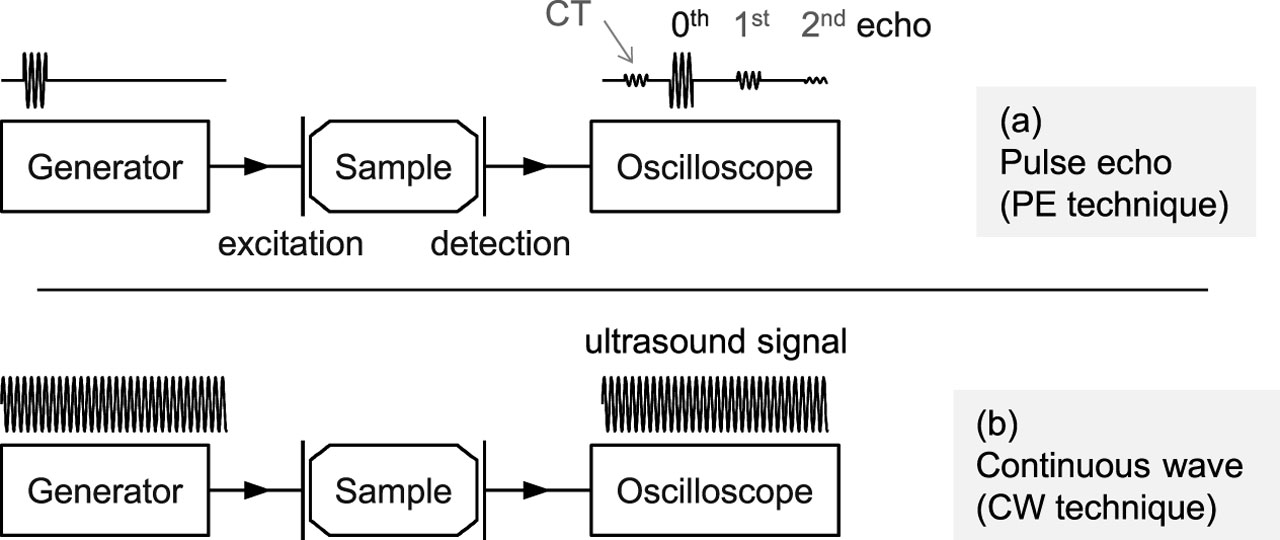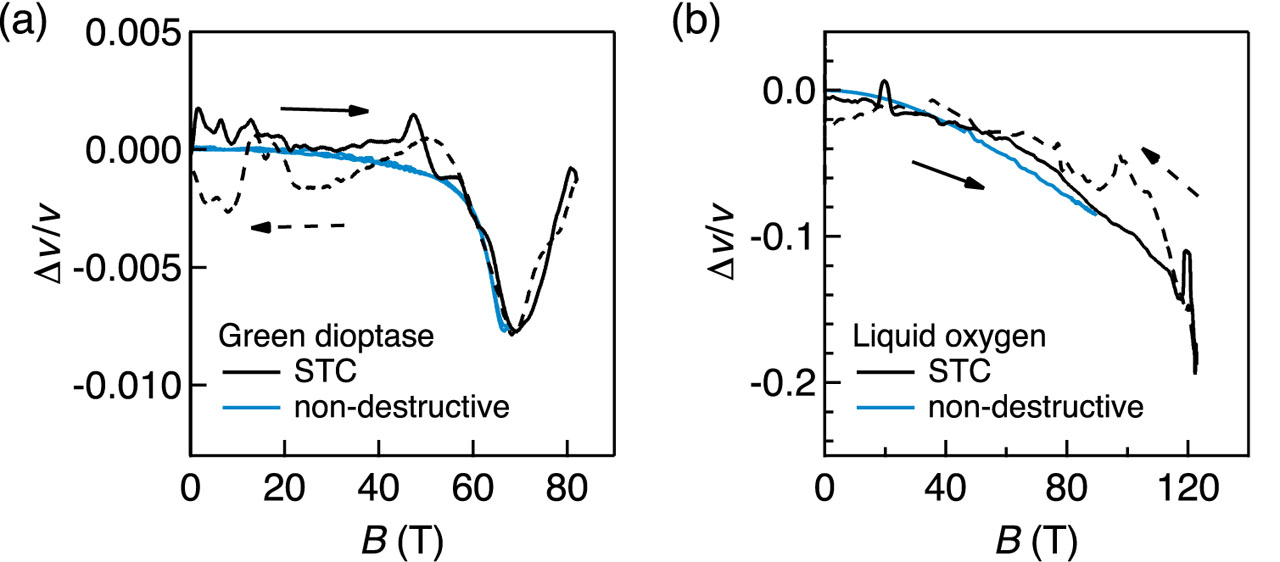Ultrasound Measurement under Ultrahigh Magnetic Fields
Kohama and Y. H. Matsuda Groups
Ultrasound is a powerful means to study numerous phenomena of condensed-matter physics as acoustic waves coupling strongly to structural, magnetic, orbital, and charge degrees of freedom. In this work, we have developed a new ultrasound measurement technique combined with the single-turn coil (STC) system, generating magnetic fields beyond 100 T [1].
Figure 1 summarizes the concepts of the ultrasound pulse-echo (PE) and continuous-wave excitation (CW) techniques. Usually, ultrasound measurements under pulsed magnetic fields are performed with the PE technique, where the pulsed ultrasound is excited and the transmitted echo signals are analyzed by a phase-sensitive technique. In this case, cross-talk noise and higher echoes that arrive after multiple reflections are separated in time. However, magnetic fields above 100 T are accessible only by destructive techniques, which generate fields only for several microseconds. This field duration is too short to perform PE ultrasound measurements. Instead, we have employed the CW technique, which excites and detects ultrasound waves continuously. In this case, the detected signal contains all echo signals. Only if the 0th echo signal is dominant, the detected signal reflects the change of sound velocity. This condition is reasonably satisfied in various magnetic phase transitions, where acoustic attenuation increases and higher-echo signals do not affect the measurements. Therefore, the CW technique can be applied for detecting phase transitions under ultrahigh magnetic fields.
Figure 2 shows representative results on green dioptase and liquid oxygen. Results obtained by the STC (black) are compared with the ones by non-destructive magnets (cyan). These results reasonably coincide despite the significant difference in the field durations by the factor of 1000 (10 ms/10 μs). For the case of green dioptase [Fig. 2(a)], an anomaly corresponding to the magnetic phase transition is observed at 65 T. Here, the measurement resolution is of the order of Δv/v ~ 10−3, which is sufficient for detecting various field-induced phase transitions. For the case of liquid oxygen [Fig. 2(b)], a continuous decrease of sound velocity is observed up to 120 T with the significant softening of Δv/v ~ −0.2. The observed change in sound velocity is extremely large, and cannot be explained by a magneto-volume effect. We point out that this sound-velocity change could be a precursor of a field-induced liquid-liquid transition of oxygen [2]. Now, the developed technique is open to users.
References
- [1] T. Nomura, A. Hauspurg, D. I. Gorbunov, A. Miyata, E. Schulze, S. A. Zvyagin, V. Tsurkan, Y. H. Matsuda, Y. Kohama, and S. Zherlitsyn, Rev. Sci. Instrum. 92, 063902 (2021).
- [2] T. Nomura, A. Ikeda, M. Gen, A. Matsuo, K. Kindo, Y. Kohama, Y. H. Matsuda, S. Zherlitsyn, J. Wosnitza, H. Tsuda, and T. C. Kobayashi, Phys. Rev. B 104, 224423 (2021).


